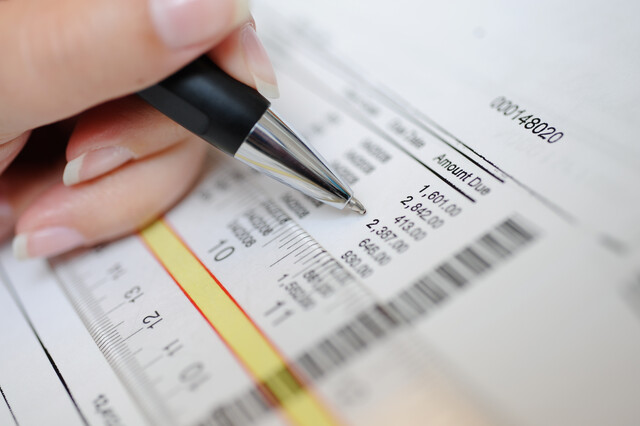Owning a business comes with some concerns for property and business ownership especially when there are multiple business partners or shareholders involved. We will differentiate between many of the common forms of property issues the business entrepreneur will encounter. This article will focus on property and ownership issues for entrepreneurs not covered under patents, copyrights, trademarks and trade secrets. More of the tangible brick and mortar, day to day use items in your business such as buildings, tools, or piece of equipment.
It is important for entrepreneurs to have knowledge of property law concepts related to their land and business possessions. Under General Property law you do not actually own things you own the rights to use them. These rights can be unlimited and even include the right to destroy something. Rights may be limited in time or duration. Real property has five dimensions. These dimensions include the three dimensions of space such as the length, width, and height, the dimension of time, and the dimension of use which is the extent to which an individual may use a piece of property.
The five dimensions of property use:
-
Space length
-
Space width
-
Space height
-
Time
-
Extent of use
Some property rights can be exercised and enforced by the owner other rights must be enforced by the government. When rights are enforced by the government this is called enforceable interest. The individual owning the property must produce a title as evidence of possessing a legal interest in the ownership.
These are useful definitions for property and property ownership.
Property is something that is under possessed it may be a real (land), personal, tangible (touchable), or intangible (such as the interest in a play or other creative work)
Land is real property and is any part of the earth's surface that can be owned as property, and everything annexed to it, whether by nature or by the human hand.
Real property is property that includes land and buildings and on the land. As a business owner your real property includes offices, factories, warehouses, and other buildings owned by the business. Real property only includes those structures that are affixed to the land and not those which can be removed such as equipment.
Real estate
Real estate is a piece of land, including the air above it and the ground below it, and any buildings or structures on it. Real estate is a common form of property ownership in businesses aside from those of patents, copyrights, trademarks is the ownership of real property or real estate. Property for a business can be owned by a single individual or two or more persons. The joint ownership of real property is when two or more people hold the title to the same piece of property or land. There are three kinds of joint ownership of real property. These include:
Tenancy in Common is the most common form of joint ownership and joint possession of real property. Under tenancy in common two or more tenants each possess a fractional portion of the entire property. Although they may not be equal portions each tenant is entitled to use the entire building or parcel of land.
Joint Tenancy is another form of joint ownership which is similar to tenancy in common but differs because joint tenancy includes a right of survivorship. In this form of ownership the survivorship means that if one of the joint tenants dies their interest in the property passes to the other tenant and they have a right to the entire piece of property. The conditions required for joint tenancy are:
-
All of the tenants have an equal right to possession of the property
-
All of the tenants have an equal interest in the property
-
All of the tenants acquired the property of the same time
-
All the tenants acquired the title to the property by the same deed
If any one of these four concepts is not met the courts will assume tenancy in common has been formed.
Property terms in the use of business and ownership
In general a property owner has a "bundle of legal rights" when they own property which is transferred with the property from the seller to the buyer. These bundle of rights include:
-
The right of possession is maintained by whomever holds the title to the property
-
The right of control which means the owner controls the use of the property
-
The right of exclusion which means other people can be excluded from using or ensuring the property
-
The right of disposition which means the owner of the title can sell, rent, or transfer the ownership of the property
-
The right of enjoyment which means the owner can enjoy the use of the property
Tenancy by the Entirety is joint ownership of property by a husband and wife who are treated as a single entity. Both the husband and wife are able to possess and use all of the property. Neither is able to sell any part of the property without the other's consent. If one spouse dies the other inherits the entire property.
As a joint owner of property you are entitled to your proportional share of rent paid by any other parties and any profits derived from the land this includes rent, or natural resources such as gas or oil.
Easements
An easement is the right one property owner to use the land of another this may include passing over the property, accessing water on the property, or replacing utilities. Easements may be granted it anytime and can be removed if necessary.
Encroachments
Encroachments are inadvertent actions generally discovered under surveys where the rights of a property owner had been encroached or damaged.
Liens
Leins are monetary claims against a property owner to secure the debt or obligation of the property owner. These are the most common types of encumbrances on property. They are most often placed in the form of mechanics liens for unpaid work and can be placed for unpaid taxes.
Deed restrictions or covenants
These are restrictions or limits on how property can be used or the types of structures that can be placed on the property. The restrictions are placed to maintain order and control in the use of property and to maintain standards.
Licenses and privileges
A license is granted to allow individuals to use the property of another. They can be terminated and any time and can be verbal or written.
Easements in gross
For reasons which cover the rights of electric, water or gas utility to place pipelines and property. Easements in gross can be transferred or sold.
Appurtenant Easements
These are easements where two properties with different owners are adjacent to each other and one has rights to use the property of the other. These are similar to roads or driveways on property.
Trespasser
A trespasser is a person who goes upon the premises of another without an express or implied invitation, for his or her own purposes, and not in the performance of any duty to the owner.
Business theft
Business theft is another property ownership issue entrepreneurs and business owners must contend with. It is even covered under IRS tax law. The Internal Revenue Service defines theft as any crime involving "the taking and removing of money or property with the intent to deprive the owner of it." The definition covers burglary, robbery, embezzlement, extortion and even blackmail. The taking of money through fraud or misrepresentation also counts as theft if the action violates state or local law.
Business property
Business property is taxable as a business owner. All of these are considered different forms of business property.
-
Building furnishings, fixtures and land Improvements
-
Office furniture and equipment
-
Property leased to others
-
Machinery and equipment
-
Construction in progress
-
Supplies
-
Tools
-
Computer hardware and operating systems
-
Leasehold Improvements
Commercial property
Commercial property includes industrial property, office buildings, Retail Stores, multifamily housing, and warehouses. Commercial property provides both collateral value and tax liabilities.
Commercial real estate is divided into six categories.
-
Industrial buildings which include processing, service, warehouse, or large office activities.
-
Office buildings which include professional office buildings, skyscrapers, and single tenant properties.
-
Restaurants and retail facilities which include retail pad sites, shopping centers, grocery stores, and retail outlets.
-
Multifamily which includes apartment complexes or high-rise buildings.
-
Land which includes undeveloped land for future development
-
Miscellaneous which includes other nonresidential properties such as hotels or medical facilities.
Commercial properties are used by business owners and entrepreneurs to conduct their business. Property can be valued in terms of cash inflow an outflow and levels of risk. Some businesses are based on the work they create or develop on commercial property. Some businesses are based on the value they create actually wholesaling properties. There are four ways that a commercial property investor can invest: personally, in their own name, using a company, indirectly through an Inside Sales Agent ISA, or through a Self-Invested Personal Pension plan (SIPP). The typical new commercial property entrant to the commercial property sector is an experienced buy-to-let investor who has been in the business for about a decade and now wants to diversify. Mortgages on commercial property are no different from residential mortgages on residential investments. The repayments come from the rent, and the mortgages are granted on the ability of the tenant to pay rent, rather than your own income or assets. Rental profits from commercial property are taxed in the same way as any other rental income.
Business owners may also lease the property which they own. As a business owner you may lease equipment or property which you own. This will require lease agreements and finding the proper renters for your space.
Business cash inflows for business property includes the following:
- Rent
-
Tax credits
-
Operating expense recoveries
- Fees from parking, vending, services
-
Proceeds from sale
- Tax Benefits
- Depreciation
Business cash inflows for business property includes the following:
-
All operating expenses and taxes
-
Initial investment (down payment)
-
Capital tenant leasing costs
-
Costs upon sale
-
Debt service (mortgage payment)
Property risk is dependent on market conditions, current tenants, and the likelihood that renters will renew their leases year to year.
These are the major ownership issues related to business structures and sharing ownership for business entities.
-
Regulation which is how the co ownership will be regulated and what requirements will be applied to the shared ownership in the sale of shared interests.
-
Gains taxation which is how the co-owners will be taxed on money and make from operating the property as well as the profits they make when it is sold.
-
Tax deductions which include whether the co-owners will be able to deduct expenses such as interest in depreciation against income that is not derived from the property.
-
Liability which is whether the co-owners are protected against claims or liabilities against them in connection with the property.
-
Protection from creditors which includes whether the co-owners are protected from each other's creditors.
-
Disputes and defaults which includes how disputes are resolved and the consequences if one of the co-owners does not fulfill their obligations.
-
Death which includes how the death of one co-owner will affect the other and what happens to the other owner's share of the business.
-
Usage rights between partners and how the property can be used.
-
Contribution of funds for each of the business owners towards the property.
-
Income and expense allocation based on the shared property and allocation of usage and profits from sale.
-
Accounting, bill payment, and management including the documentation and responsibilities of co-owners.
Tax responsibilities
All business property owners are responsible for tax issues related to their property ownership. If your business owns real property you must pay property taxes on this property. If real estate is sold, the tax for the year is distributed between the previous owners and the new owners based on the proportion of the year they owned the property. Property taxes are assessed by local cities and counties. When you purchase real estate for your business, the property will be registered with your local taxing authority and you will receive information on the changes in your assessed value and the amount of tax you owe each year.
Other areas of potential business property include:
Data ownership
Data ownership refers to both the possession of and responsibility for information. As a business entity your business may create data or other information which you develop for use with clients. This may contain proprietary information which provides your business an advantage in the marketplace. You want to protect this information from unauthorized sources such as competitors and hackers. As a business owner you may be any of these:
-
Data creator is the party that creates or generate data
-
Data consumer is the party that uses the data owns the data
-
Data Funder is the user that commissions the data creation claims ownership
You will take measures to prevent unauthorized release of the proprietary data property of your business by providing physical security, network security, and virus protection for your business data property and computer equipment.
Your business name
Your business name may also become your property. Your trade name or fictitious business name should be registered with the Secretary of State to legally identify your business unfortunately it does not protect your business from name duplication. Anyone who wants to serve legal papers to the business would need to determine the true owner and location of the business.
Service marks
Service marks are similar to trademarks and provide protection for a specified period of time usually 5 to 10 years. State governments can help you determine if the business name you wish to use is already registered. You are required to submit a registration application, and sample labels to show how the mark is being used as your service mark. You may also want to register for Federal trademark registration as trademark distinguishes your products or services from those are others and may be particularly useful in your region.
Summary Takeaways and Reminders
Business owners and entrepreneurs encounter many property and ownership issues in the operation of their business. Owning a business comes with some concerns with property and business ownership especially when there are multiple business partners or shareholders involved. There are property and ownership issues for entrepreneurs not covered under patents, copyrights, trademarks and trade secrets. It is important for entrepreneurs to have knowledge of property law concepts including real property, real estate, and commercial real estate transactions. These concepts have a number of sub-issues that you will encounter and need to be knowledgeable of that include easements, encroachments, liens, deed restrictions or covenants, licenses and privileges, easements in gross, and Business property law. Business owners should also be aware of the business structures and sharing ownership of business entities. Property is an important asset for the entrepreneur to use in conducting their business.






























